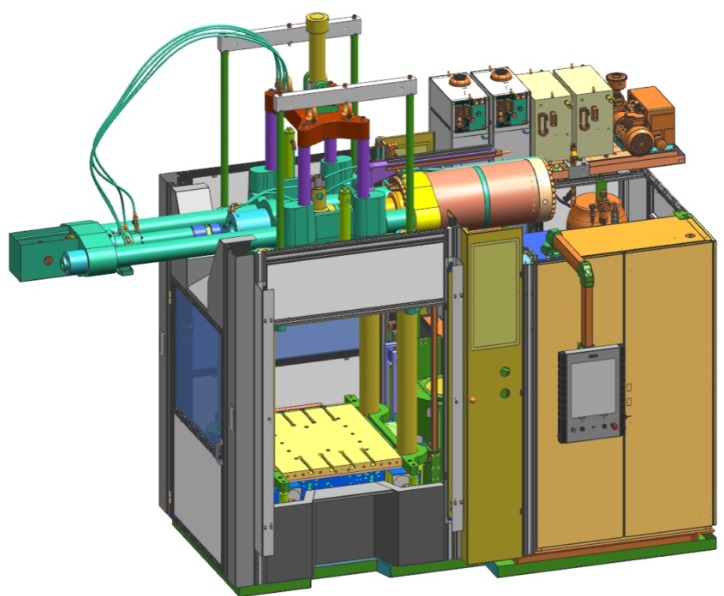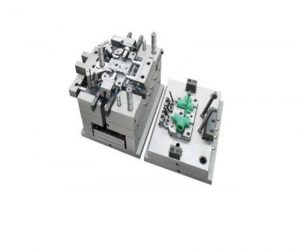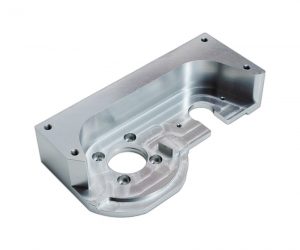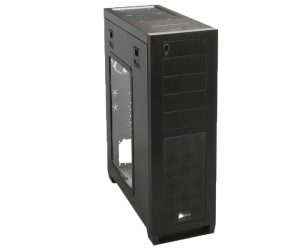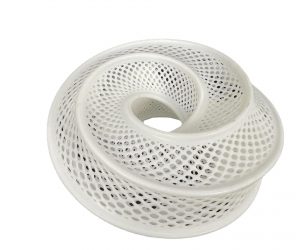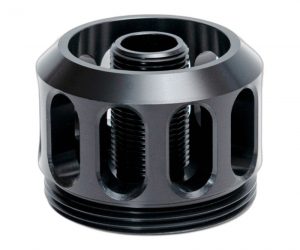In the plastic manufacturing process, the electrical components that power injection molding machines are fundamental to their operation. These components significantly influence the accuracy, efficiency, and overall performance of the molding process. From managing the injection system to controlling mold opening and closing, the electrical components ensure stable, precise, and reliable machine operation. In this article, we’ll explore the importance of electrical components in injection molding machines, their functions, and their role in optimizing production.
1. Introduction
Injection molding is a core manufacturing process for producing plastic products, from automotive parts to household goods. The functionality of the injection molding machine (IMM) depends heavily on its electrical components. These components ensure that various machine functions, such as injection, cooling, and mold clamping, occur accurately and efficiently. The reliable performance of these electrical parts directly impacts the production speed, part quality, and overall cost-effectiveness of the molding process.
2. The Significance of Injection Molding Machine Electrical Parts
2.1 Powering Precision and Control
Electrical parts in injection molding machines are essential for maintaining precision and ensuring controlled operations. By controlling the movement of various machine elements, such as the screw, mold plates, and cooling system, electrical components help achieve high levels of accuracy in both positioning and timing. Precise control is especially important for ensuring that plastic materials flow correctly into mold cavities and cool at the right rate.
2.2 Ensuring Safety and Reliability
Injection molding machines are designed to prioritize safety. Electrical components play a key role in protecting operators and preventing machine failure. For instance, overload protection, short-circuit protection, and emergency stop functions are implemented in the electrical system to avoid accidents. By minimizing risks of electrical failure, these components contribute to both safety and reliability, ensuring smooth, uninterrupted production.
3. Understanding the Five Key Electrical Parts
3.1 Electric Motor
The electric motor is one of the most vital electrical components in an injection molding machine. It converts electrical energy into mechanical energy, driving the various movements within the machine, such as screw rotation and mold clamping. Motors provide the torque and speed necessary for precise injection and mold opening and closing. The use of electric motors also enhances the precision and repeatability of the injection molding process.
3.2 Heating Elements
Heating elements are responsible for heating the plastic material until it reaches a molten state, allowing it to flow into the mold cavities. These components are often made from resistance wires or ceramic elements that generate heat when an electrical current is passed through them. Properly functioning heating elements are crucial for maintaining the right temperature and viscosity of the plastic material, ensuring smooth injection and high-quality molded parts.
3.3 Temperature Controllers
Temperature controllers are essential for regulating and monitoring the temperature of both the machine and the mold. These controllers ensure that the heating elements maintain the desired temperature throughout the process, preventing overheating or underheating that could lead to poor material flow, defects, or inconsistencies in the final product. Advanced temperature controllers are equipped with PID (Proportional-Integral-Derivative) algorithms and digital displays, allowing for precise and real-time temperature management.
3.4 Power Supply Units
Power supply units (PSUs) are responsible for converting the incoming electrical current to the appropriate voltage and current levels required by various components of the injection molding machine. They ensure that the machine receives a steady, reliable electrical supply, preventing voltage fluctuations or interruptions that could lead to machine malfunctions or production downtime. High-quality PSUs are crucial for the overall stability of the injection molding process.
3.5 Control Panels and PLCs
Control panels and programmable logic controllers (PLCs) serve as the interface between the operator and the machine. They allow operators to set parameters such as injection speed, pressure, cycle times, and mold opening and closing speed. Control panels and PLCs also monitor the machine's operating status, displaying any error messages and facilitating troubleshooting. With advanced PLC systems, manufacturers can adjust the process in real time, improving both productivity and part quality.
4. Functionality and Applications of Electrical Parts
4.1 Electric Motor: Driving the Injection Process
The electric motor is at the heart of the injection process. It drives the screw, enabling precise control over the injection speed and pressure. The motor also controls the movements of the mold opening and closing mechanisms. By providing efficient power, electric motors enhance the consistency and quality of molded parts.
4.2 Heating Elements: Achieving Optimal Material Flow
Heating elements ensure that the plastic material is heated to the correct temperature for efficient flow into the mold cavity. These elements maintain consistent heat levels, helping to avoid defects such as incomplete mold filling or inconsistent part quality. Heating elements are particularly important for ensuring that the material viscosity is optimal for molding.
4.3 Temperature Controllers: Maintaining Consistent Heat Levels
Temperature controllers work in tandem with heating elements to maintain consistent temperature levels. By regulating the temperature throughout the machine and mold, these controllers ensure that the plastic material remains in the correct molten state for efficient molding and part quality. Advanced temperature controllers also allow for faster cycle times and reduced material waste.
4.4 Power Supply Units: Ensuring Reliable Power Distribution
Power supply units are essential for the proper functioning of the machine, ensuring stable and continuous power to all electrical components. They provide the right voltage and current levels to the electric motor, heating elements, and control systems, minimizing power fluctuations and ensuring that the injection molding machine operates efficiently and reliably.
4.5 Control Panels and PLCs: Orchestrating Machine Operations
Control panels and PLCs serve as the brain of the injection molding machine, allowing operators to adjust settings and monitor the machine's performance. With these systems, operators can fine-tune the molding process, ensuring high-quality results and fast production cycles. In addition, modern PLCs can store data, monitor energy consumption, and provide predictive maintenance alerts.
5. Do Injection Molding Machines Use Electricity?
Yes, injection molding machines use electricity for various functions, including controlling the electric motor, heating elements, temperature controllers, and power supply units. The machines rely on electrical components to drive mechanical functions and regulate process parameters. Electricity enables the precision, consistency, and speed required for modern injection molding operations, making it an indispensable part of the process.
6. Exploring Electric Injection Molding Machines
6.1 Advantages of Electric Injection Molding Machines
Electric injection molding machines offer several advantages over hydraulic machines, such as:
- Faster cycle times: Due to precise servo control, electric machines have faster response times.
- Improved energy efficiency: Electric machines consume less energy since they use energy only when needed.
- Enhanced precision: Electric machines provide more accurate control over injection speed, pressure, and positioning, improving product consistency.
- Reduced maintenance: Electric machines have fewer moving parts and don’t require hydraulic oil changes, reducing maintenance time and costs.
6.2 Working Principle of Electric Injection Molding Machines
Electric injection molding machines use servo-driven electric motors instead of hydraulic systems to drive the machine’s functions, including screw rotation, mold clamping, and ejection. The use of electric motors allows for better control over speed, pressure, and positioning, resulting in faster and more accurate molding cycles.
6.3 Applications and Industry Impact
Electric injection molding machines are particularly suited for applications requiring high precision, such as producing small or medium-sized components with tight tolerances. Industries such as automotive, electronics, and medical devices benefit from the enhanced speed, accuracy, and energy efficiency offered by electric machines.
7. Conclusion
Injection molding machine electrical parts are critical to the efficient, precise, and reliable operation of the molding process. From electric motors and heating elements to temperature controllers and power supply units, these components work together to power the machine and ensure high-quality product output. Understanding the functionality of these electrical components helps manufacturers optimize production processes, minimize downtime, and improve the quality of their molded products.
8. FAQ
8.1 Do injection molding machines use electricity?
Yes, injection molding machines use electricity to power their various components, including motors, heating elements, and temperature controllers. Electricity enables precise control over the molding process, resulting in improved efficiency and product quality.
8.2 What is an electric injection molding machine?
An electric injection molding machine uses servo-driven electric motors to control the machine’s functions, offering enhanced precision, energy efficiency, and faster cycle times compared to hydraulic machines.
Electric machines are particularly suitable for applications requiring high precision and energy efficiency, and their use is becoming increasingly popular across industries such as automotive, electronics, and medical devices.
In summary, injection molding machines are driven by a range of electrical components that play crucial roles in controlling and optimizing the molding process. By understanding how these components work, manufacturers can improve the quality, speed, and cost-effectiveness of their operations.
